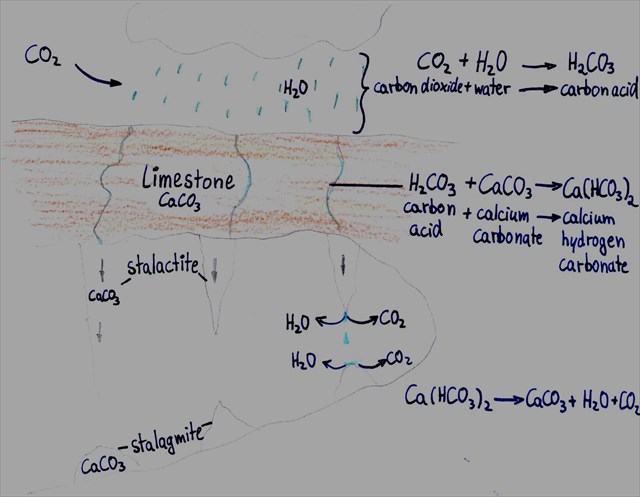Ghar Dalam and the formation of the dripstones EarthCache
Ghar Dalam and the formation of the dripstones
-
Difficulty:
-

-
Terrain:
-

Size:  (not chosen)
(not chosen)
Please note Use of geocaching.com services is subject to the terms and conditions
in our disclaimer.
Please note that you will have to pay money (Adults 5€, Youth/Seniors/Students 3,50€, Children (6-11 years) 2,50€) to answer the asked questions. Watch the opening times: Monday to Sunday: 9.00-17.00!
Ghar Dalam and the formation of dripstones
Ghar Dalam (pronounced ar dàlam in Maltese and meaning "Cave of Darkness") is Malta's most important paleontological site. It is the only cave in Malta where a sequence of fossilized deposits of animals extended back from about 180,000 years ago were found. These deposits record the animal history of Pleistocene or Ice Age Malta.
The cave is some 144m long, the first 50m being accessible to the general public, whilst the area beyond the first 85m lies in perpetual darkness.
GEOLOGY OF THE CAVE
The Ghar Dalam is embedded into the rock formation of the lower coral limestone being of tertiary age. The cave opens to the valley of Wied Dalam, which is transverse to the cavity. The valley, however, was originally much higher and had been cut over time deeper. The cave was formed initially by leachate (any liquid that, in passing through matter, extracts solutes, suspended solids or any other component of the material through which it has passed.), which entered through cracks in the ground and created an underground cavity by solution weathering. In the Pleistocene, especially during cold periods, a moist climate with more rain prevailed in the Mediterranean largely. As a result the river swelled periodically and eroded the limestone. During the Middle Pleistocene, the river reached the height of today's cave entrance and laid the cavity free. The Ghar Dalam represents just the northeastern part of the former underground cavity. At the opposite of the Wied Dalam Valley there is another smaller cavity called "Second Cave". This cave covers the southwestern part of the former karst channel. In the late Middle Pleistocene and during the Later Pleistocene the river filled the cave with sediments reaching a thickness of more than 5 meters.
Today, the valley is substantially lower than the cave entrance.
I have sketched the process. It's not the best, but I hope it will be enough for you to understand how it was formed.

THE FORMATION OF THE DRIPSTONES
In the cave you can see some very huge stalactites and stalagmites. I will tell you how they were built by nature.
When water seeps through the earth layers above the cave it absorbs carbon dioxide and builds up a weak carbonic acid. This with carbon dioxide enriched water is able to dissolve the limestone. The result is calcium hydrogen carbonate. If the solution reaches the roof of the cave air occurs and the carbon dioxide escapes. The calcium hydrogen carbonate is transformed back into the poorly water-soluble calcium carbonate (lime). The water evaporates, lime remains. This sintered lime hanging from the ceiling forms the stalactite. Impinging on the ground the drop of water still contains some lime. During the impact of the drop carbon dioxide is released once more and calcium precipitates.
Then a dripstone grows from the ground into the height - a stalagmite. If stalagmite and a stalactite are growing together it is called stalagnate.
By minerals dissolved in the water dripstones can have different colorations like the huge stalagmite in Ghar Dalam. You can see it walking the pathway into the cave on the right sight. The drip stone is about 1,30m high and contents a shimmering color at the top.
One more interesting fact: The growth rate of dripstones is about 8 to 15 mm per 100 years.
For those liking chemistry I have sketched the process and added some chemical formulas.

THE QUESTIONS
1. Please go inside the cave (therefore you have to pay money, then go through the museum and down the steps!). After approximately 20m, you can see a big stalacmite just 50centimeters away from the path through the cave (see picture). At the side facing the cave-entrance you can recognize a characteristic coloring near the top.
Please name me the color and how it could be developed by the time!
2.The Ghar Dalam was formed by three factors contributing to the formation. Please name me at least two factors and explain shortly how the contributed to the formation!
Please send these anwers/explanations to me (use profile-link above).
Have fun!
Additional Hints
(Decrypt)
2. Gurer vf na vasbezngvba gnoyr ng gur yrsg fvqr bs gur pnir, guvf bar jvyy uryc lbh ;)